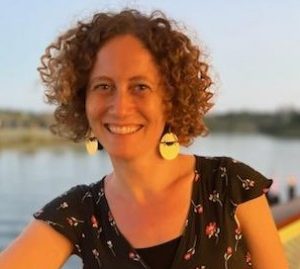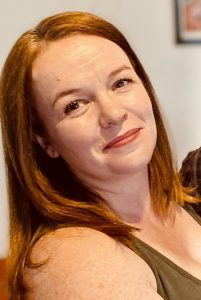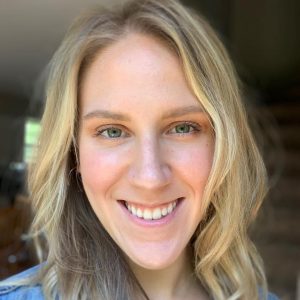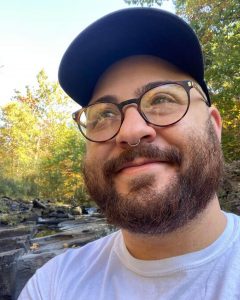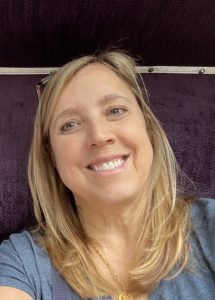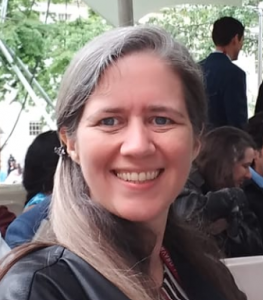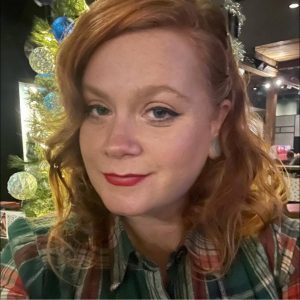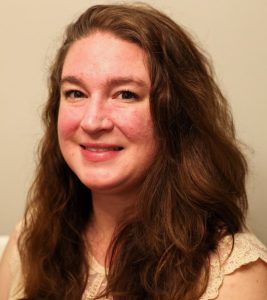

I disliked Ruby from the moment I met her. It was my first day as the administrative assistant at a brand-new company, and she could not be bothered with the new girl. To be fair, in the accounting department it was the busiest time of the month, and she was clearly frazzled with all of the billing that needed to go out the door. I told myself to give her a chance, but as the weeks went by it became clear that she was brusque and abrasive, and she had this way of talking to me that made me feel like she was ordering me around. And so, our feud began.
For the first few months, we largely ignored each other when we passed in the hallway or the lunchroom, but then the day came when my company promoted me to an accounting clerk position. I was elated until I discovered that my trainer would be none other than Ruby, and my figurative balloon of excitement popped and fell in sad little pieces to the floor of my cubicle. The friends I had made around the office told me to simply ignore her attitude, but that’s easier said than done when you are spending hours on end together.
“Accounting always has to work on weekends during month-end. That’s just the way it is,” she told me one Friday afternoon as I prepared to leave. “I’ll see you tomorrow at 9:00 a.m. and we’ll get all of the billing done.”
“How long will that take? I have plans tomorrow night.” I didn’t tell her that I had a date with a cute guy from the office, and that there was exactly 0% chance that I was staying past 4:00 p.m.
“I don’t know, Ashleigh. We work until it’s done,” she huffed before shutting her office door in my face.
So, I showed up bright and early on Saturday morning, and worked… and worked… and worked. The billing was definitely not finished when I knocked on Ruby’s door at 4:00 p.m. sharp to tell her I was leaving, but I didn’t care. I was 23 years old and not ready to work my entire Saturday away, especially not to help someone who had sprung it on me the very afternoon before. Of course, this didn’t sit well with Ruby and she told me as much.
“That’s really disappointing, Ashleigh.” (That condescending tone, ugh.) “I thought I could count on you to get the work done. I guess I’ll just stay all night finishing it, so show me where you left off.”
“Everything is on my desk, you’ll figure it out,” I said flippantly and walked out the front door. Later that evening, though, I started to worry. What if she told our boss that I had shirked my duties? What if she claimed that I’m a liability to the accounting department, and that I should be fired? My first real job, and this woman would ruin it all, or so I was convinced by the time I walked into the office on Monday morning.
Turns out that she did figure it out and got all of the billing done. It also turns out that she did not, in fact, tattle on me to our boss. I was shocked, and I felt this little piece of melted ice fall from the iceberg that was my dislike for Ruby. Sure, around the office, we still called her “Rude-y” or “Moody Ruby” among ourselves when she was on a rampage about something, but I also begrudgingly began to respect her. She had a strong work ethic that I could only hope to emulate. She was very intelligent, and a great problem solver. Most of all, on the few occasions that her stony façade cracked, she had an infectious laugh. Maybe I didn’t dislike her quite as much as I had originally thought.
My work situation soon changed, however, because I was promoted again to a financial analyst position with the opportunity to work from our Center City office. I couldn’t believe my luck! It seemed like a dream to take the train into the big city every day and have my very own cubicle on the 22nd floor of 1650 Arch with expansive windows that looked out toward One and Two Liberty Place. I began to take walks every day at lunch, exploring the neighborhoods around my office. I wandered east on JFK Boulevard to City Hall, then back west to 30th Street Station. Some days I walked northwest toward the Franklin Institute and the Benjamin Franklin Parkway, but other days I chose a southerly direction toward the leafy haven of Rittenhouse Square. The city was mine to discover, and I soaked in my lunchtime explorations like sunshine.
As my love for Philadelphia bloomed, so did my obsession with photography. I adored the city’s architecture and started taking pictures here and there of interesting buildings, trees, and streets I saw on my daily walks, posting my favorite shots to my Instagram. Roaming one day around Fitler Square, I found myself face-to-face with a lime-green house and its cherry-red door. It was so visually pleasing that I immediately raised my phone camera and snapped a picture. The next street over revealed a lemon-yellow door within a pale gray brick façade, and the following street showcased the most cheerful and ornate Kelly-green door adorned with a shamrock wreath. My mission on my afternoon walks became finding new and interesting doors. They were the hidden treasures to be found past the hustle and bustle of Center City with its towering skyscrapers and streets teeming with people dodging steam rising from sewer grates. My solitary photography walks were the best part of my work days.
The old saying goes that absence makes the heart grow fonder. True to that phrase, the less I saw Ruby, the more we talked. We remotely collaborated on work tasks more often, and we did so in an increasingly friendly manner. My respect for Ruby continued to grow, and I could sense that her respect for me was also blooming as I matured in both my personal outlook and my accounting role. Then, a year after my move to Philadelphia, our company announced that our offices were merging, and that we would all be working from the Center City office. On the day of the move, I helped Ruby settle into her cubicle right down the hall from my own. Ruby had been staunchly against working in the city, turning her nose up at the idea and voicing her displeasure at every opportunity, but as she marveled at our shared view, I had a hard-to-explain feeling. I sensed that she was masking her fear of the city with haughtiness so as not to show her vulnerability. It was that realization that gave me an idea.
“Hey Ruby, why don’t we take a walk and go grab some lunch?” I asked her. After a moment of hesitation, she agreed. We set off into the bright sunshine and strolled over to the food court at One Liberty Place. Sneaking a peek at Ruby through my sunglasses, I could tell by the way she tilted her head back to look at the skyscrapers that she was impressed by the architecture. By the time we had eaten and worked our way back to the office, Ruby seemed happier about being out and about in Philly. The next day, when I asked if she’d like to go for a walk at lunch, she almost jumped out of her chair and excitedly exclaimed, “Yes, count me in!”
This lunch walk, I decided, would be different – I wanted to show Ruby more of the city that I had fallen in love with over the past year and a half. On this day, I guided her to Rittenhouse Square. There was a bustling outdoor art market being held in the park, and we wandered from stall to stall, stopping here and there to admire the miniature watercolors depicting Boathouse Row and the canvas photography prints of the skyline looking across the Delaware River from the Camden Waterfront. I bought an etching of a bluebird; Ruby bought some greeting cards to send to her family. They lived in New England, and Ruby confessed that she missed them dearly and sometimes considered moving home to be near them. Another crack in her tough façade had appeared, and I felt awful that she must be lonely without her family nearby. My family had always been close – what would it be like to be far from them? What kind of person might I be without the steadying presence of my loved ones? Hearing Ruby’s situation gave me a deepened understanding of her outward behavior.
As the months went on, our lunchtime walks became daily happenings. I still loved finding beautiful new doors and revisiting my favorite ones. As the city prepared for Halloween and then Christmas, festive seasonal decor began to appear on many doors, much to my joy. Ruby, on the other hand, favored windows. She saw these as eyes to the people living in the houses behind them, and she especially delighted in seeing house cats perched on inner windowsills, basking in a sunbeam or playing with a curtain. I showed Ruby my Instagram profile full of my door pictures; she promptly set up her own Instagram and began posting her lovely window shots. Our walks were the highlight of my day, as it was so nice to share my thoughts, ideas, memories, and hopes with Ruby, and to hear hers. Some days, we just wandered in silence. The only sounds were the occasional “Oh look over there” or “Let’s walk down this little street,” the birds chirping in the trees, the far-off honk of car horns, and the crunch of our footsteps on concrete, leaves, or snow.
Ruby and I began to meet up in Philadelphia on weekends. We took the ancient elevator up to the observation deck under William Penn’s statue at City Hall and reveled in the view. We sneaked up to the conference area on the 33rd floor of the Loews Hotel and were equally entranced by that vantage point. I watched Ruby fall in love with the city much as I had the year before, and by spending this time together I discovered that she wasn’t the brash, mean person I thought she was when I first met her. She was a kind, thoughtful, smart, funny, wonderful human. I just had to gain her trust to see the soul inside.
A few years after Ruby’s move to the city office, our company announced they were moving all accounting operations to Houston and offered to pay for each employee’s relocation. Ruby took the offer; I found a new job in the area. I couldn’t leave my family or the city I loved so much, but Ruby was ready for a new adventure. On our last day in the office together, Ruby helped me pack up my things and then we embarked on one last walk. We found ourselves in the sanctuary of the Cathedral Basilica of Saints Peter and Paul. Neither Ruby nor I are particularly religious people, but we sat quietly together in a pew admiring the grandeur. Ruby, of course, found the stained-glass windows fascinating, while I was in awe of the ornate front doors. In that moment I realized that, despite our differences, being able to bond over the city we had both come to adore was what had created a lasting friendship.
It’s been eight years since I last saw Ruby. She did indeed move to Texas and remains there to this day. I, meanwhile, met my now-husband and moved to Wilmington, Delaware. Ruby and I mostly keep in touch over social media. I miss her and wish we spoke more often. I hope in the future we can reconnect in person, but whenever I post a new door picture on Instagram, I think of my special friend and those golden days we shared in the City of Brotherly Love, and without fail, I smile.
Ashleigh McAneny is an emerging writer and photography enthusiast whose works have appeared in The Philadelphia Inquirer, Stonecrop Magazine, and Reader’s Digest. She particularly enjoys writing creative nonfiction and fiction, and photographing colorful doors. Born in Philadelphia and raised in Montgomery County, Pennsylvania, Ashleigh earned a Bachelor of Interdisciplinary Studies from Villanova University. She now resides in Wilmington, Delaware with her husband and their dog. You can find her @ashleigh_erin on Instagram.
